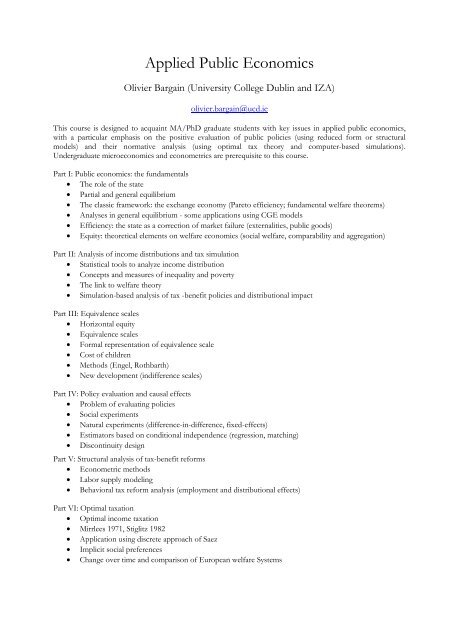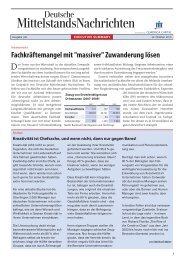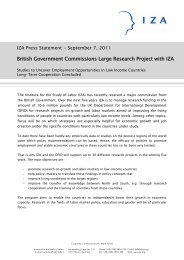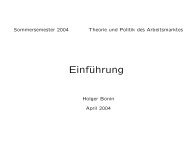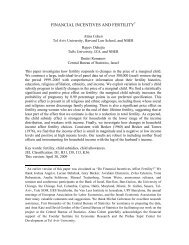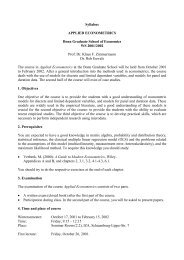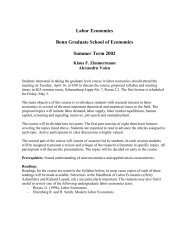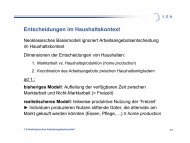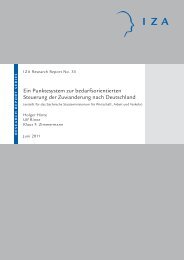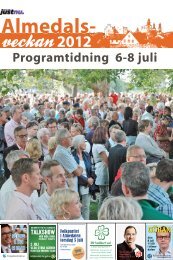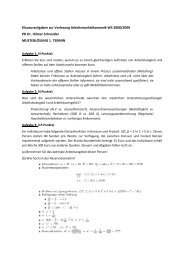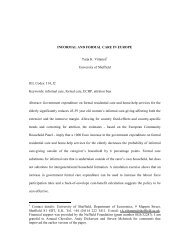Applied Public Economics - IZA
Applied Public Economics - IZA
Applied Public Economics - IZA
You also want an ePaper? Increase the reach of your titles
YUMPU automatically turns print PDFs into web optimized ePapers that Google loves.
<strong>Applied</strong> <strong>Public</strong> <strong>Economics</strong><br />
Olivier Bargain (University College Dublin and <strong>IZA</strong>)<br />
olivier.bargain@ucd.ie<br />
This course is designed to acquaint MA/PhD graduate students with key issues in applied public economics,<br />
with a particular emphasis on the positive evaluation of public policies (using reduced form or structural<br />
models) and their normative analysis (using optimal tax theory and computer-based simulations).<br />
Undergraduate microeconomics and econometrics are prerequisite to this course.<br />
Part I: <strong>Public</strong> economics: the fundamentals<br />
• The role of the state<br />
• Partial and general equilibrium<br />
• The classic framework: the exchange economy (Pareto efficiency; fundamental welfare theorems)<br />
• Analyses in general equilibrium - some applications using CGE models<br />
• Efficiency: the state as a correction of market failure (externalities, public goods)<br />
• Equity: theoretical elements on welfare economics (social welfare, comparability and aggregation)<br />
Part II: Analysis of income distributions and tax simulation<br />
• Statistical tools to analyze income distribution<br />
• Concepts and measures of inequality and poverty<br />
• The link to welfare theory<br />
• Simulation-based analysis of tax -benefit policies and distributional impact<br />
Part III: Equivalence scales<br />
• Horizontal equity<br />
• Equivalence scales<br />
• Formal representation of equivalence scale<br />
• Cost of children<br />
• Methods (Engel, Rothbarth)<br />
• New development (indifference scales)<br />
Part IV: Policy evaluation and causal effects<br />
• Problem of evaluating policies<br />
• Social experiments<br />
• Natural experiments (difference-in-difference, fixed-effects)<br />
• Estimators based on conditional independence (regression, matching)<br />
• Discontinuity design<br />
Part V: Structural analysis of tax-benefit reforms<br />
• Econometric methods<br />
• Labor supply modeling<br />
• Behavioral tax reform analysis (employment and distributional effects)<br />
Part VI: Optimal taxation<br />
• Optimal income taxation<br />
• Mirrlees 1971, Stiglitz 1982<br />
• Application using discrete approach of Saez<br />
• Implicit social preferences<br />
• Change over time and comparison of European welfare Systems
General references<br />
• Auerbach, A and MS Feldstein Handbook of <strong>Public</strong> <strong>Economics</strong>, Amsterdam: North-Holland (volume 1, 1986;<br />
volume 2, 1987; volumes 3 & 4, 2002).<br />
• Blundell, R. , and T. MaCurdy, “Labor Supply: A Review of Alternative Approaches.” In Handbook of Labour<br />
<strong>Economics</strong>, eds. Orley Ashenfelter, and David Card, Volume 3: 1559-1695. Amsterdam: Elsevier Science,<br />
1999<br />
• Blundell R. and M. Costa Dias : “Alternative Approaches to Evaluation in Empirical Microeconomics”,<br />
forthcoming in the Journal of Human Resources; also as <strong>IZA</strong> discussion paper 3800.<br />
• Myles, G.: <strong>Public</strong> <strong>Economics</strong>, Cambridge University Press, 1995<br />
• Lambert, P. The Distribution and Redistribution of Income: A Mathematical Analysis. (Manchester: Manchester<br />
University Press, 2002)<br />
• Salanié, B., The <strong>Economics</strong> of Taxation, MIT Press, London, 2003.


